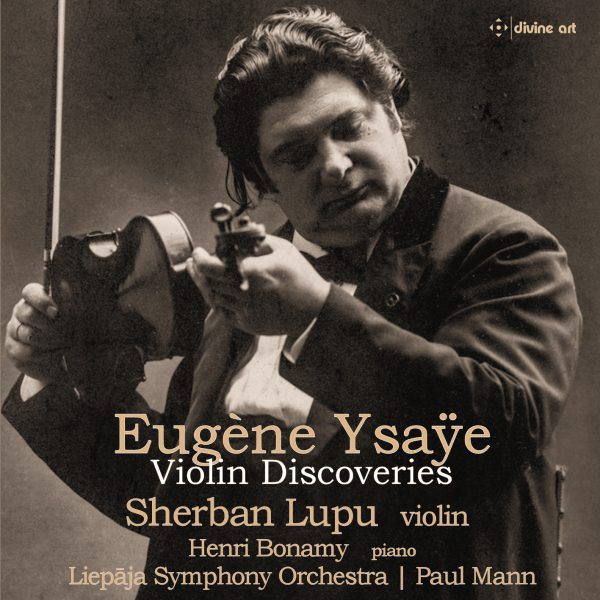The Chronicle Review Corner
We’re catching up on the backlog of classical CDs we’ve had and this quality programme from Divine Art came out, cough cough, some time ago. If Ysaÿe hadn’t died in 1931 he’d have a missed a birthday, put it like that.
It’s a delightful album that showcases the range and virtuosity of Ysaÿe, with violinist Sherban Lupu a specialist in his work. Given the title of the album and the fact that the album features a selection of Ysaye’s lesser-known works, it’s probably new music for most people and it’s well worth buying — the record sleeve notes say that the Belgian composer is “recognised as one of the greatest violin virtuosos of the 19th and early 20th centuries” and regarded as the king of the violin by Nathan Milstein, the Russian-born American virtuoso violinist.
The album as a whole is very listenable and attractive; the sleeve notes say that Ysaÿe was noted for his “kindness and enthusiasm” so perhaps some of that comes through his music. The sleeve also says that he was “a true avant-garde composer” whose works feature “revolutionary” violin technique but there’s not a moment of “avant-garde” sound to make it difficult.
The album opens with dramatic piano (Henri Bonamy) and violin but then the first of two Scènes Sentimentale settles down to being a showcase for the range of the violin and a dense piece that nicely combines the dramatic and sensitive, and perhaps a little romantic. The second Scènes Sentimentale is more of the same, perhaps the music to an old silent movie where love is declared.
All but one track is a world premiere recording and the result of research in the Royal Library of Belgium in Brussels and the Royal Conservatoire of Liège and the next piece, Elégie, was discovered with no title and no ending, both added here.
Trois Etudes-Poèmes are next, the first clearly drawing influence from folk music and sounding both a little English and a little Latin American, a tango in Argentina maybe.
The violin and piano accompaniment continues in similar vein until the Violin Concerto in G minor, which switches from two instruments to the full Liepaja Symphony Orchestra. This has been reconstructed by Lupu and orchestrated by Sabin Pautza, Lupu describing it as “a historical milestone towards understanding Ysaÿe’s creative genius”. The change is a little startling; the piece starts with a dramatic swelling of strings, hits a domineering and majestic section before a short violin solo returns the music to the less imposing. The orchestra jumps in and a melody echoes a more famous tune, Elgar maybe, before the solo violin returns and largely remains, the piece refraining much of the sounds from the earlier pieces, from intimate to dramatic.
@divineartrecordingsgroup
A First Inversion Company
Registered Office:
176-178 Pontefract Road, Cudworth, Barnsley S72 8BE
+44 1226 596703
Fort Worth, TX 76110
+1.682.233.4978












